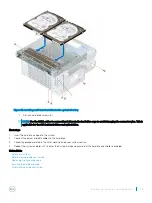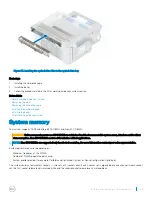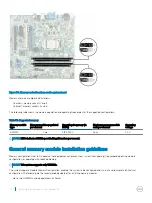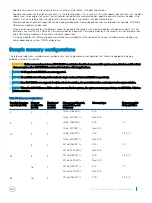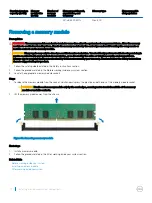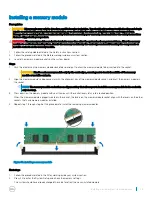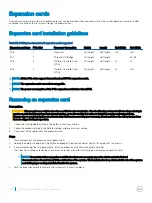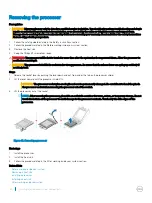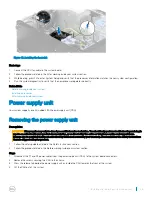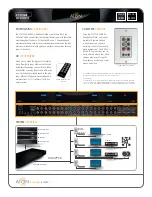
•
Populate all sockets with white release tabs first, and then all the sockets with black release tabs.
•
Populate the sockets by the highest rank count, in the following order—first in sockets with white release tabs and then with the black
release tabs. For example, if you want to mix single-rank and dual-rank memory modules, populate dual-rank memory modules in the
sockets with white release tabs and single-rank memory modules in the sockets with black release tabs.
•
Memory modules of different capacities can be mixed provided other memory population rules are followed (for example, 2 GB and 4
GB memory modules can be mixed).
•
When mixing memory modules with different capacities, populate the sockets with memory modules with highest capacity first. For
example, if you want to mix 2 GB and 4 GB memory modules, populate 4 GB memory modules in the sockets with white release tabs
and 2 GB memory modules in the sockets with black release tabs.
•
If memory modules with different speeds are installed, they will operate at the speed of the slowest installed memory module(s) or
slower depending on system DIMM configuration.
Sample memory configurations
The following table shows sample memory configurations for a single processor configuration that follow the appropriate memory
guidelines stated in this section.
CAUTION:
Dell recommends you to use ECC DIMMs to minimize the risk of uncorrectable system error, data loss and/or silent
data corruption. Non-ECC DIMM is not used for mission-critical applications.
NOTE:
16 GB quad-rank RDIMMs are not supported.
NOTE:
1R and 2R in the following tables indicate single-rank and dual-rank DIMMs respectively.
NOTE:
Non-ECC DIMMs are supported only in selected countries, for more information contact your sales representative.
NOTE:
When the 2400 MHz non-ECC modules are used in the system, the system memory speed drops to 2133 MHz. This is a
BIOS restriction.
Table 36. Memory configurations
Populated system
capacity (in GB)
Memory
module size
(in GB)
Number of
memory
modules
Memory module rank,
organization, and
frequency
Memory type
Memory module
slot population
4
4
1
1R, x8, 2133 MT/s,
1R, x8, 2400 MT/s
ECC
Non-ECC
1
8
4
2
1R, x8, 2133 MT/s,
1R, x8, 2400 MT/s
ECC
Non-ECC
1, 2
16
4
4
1R, x8, 2133 MT/s,
1R, x8, 2400 MT/s
ECC
Non-ECC
1, 2, 3, 4
8
2
2R, x8, 2133 MT/s,
2R, x8, 2400 MT/s
ECC
Non-ECC
1, 2
32
8
4
2R, x8, 2133 MT/s,
2R, x8, 2400 MT/s
ECC
Non-ECC
1, 2, 3, 4
16
2
2R, x8, 2133 MT/s,
2R, x8, 2400 MT/s
ECC
Non-ECC
1, 2
64
16
4
2R, x8, 2133 MT/s,
ECC
1, 2, 3, 4
Installing and removing system components
71



